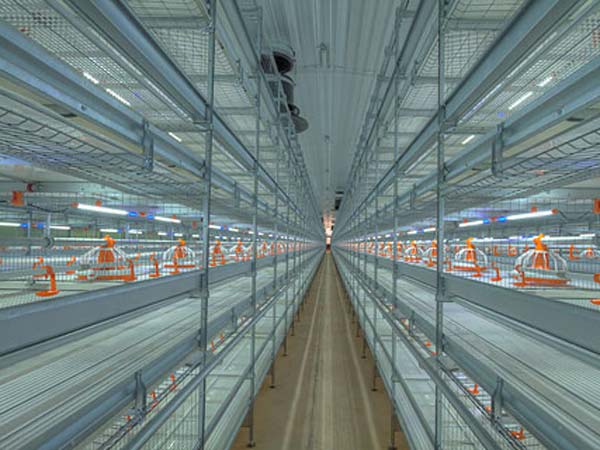Precautions in the use of broiler cage wet curtains
- font size
- Be the first to comment!
The wet curtain of one of the broiler rearing equipment is an indispensable cooling device for summer farms. However, when the wet curtain is not used for a long time, it must be checked regularly to prevent the equipment from reaching the cooling effect and shortening the life when it is used again in the coming year. Also pay attention to the maintenance of the wet curtain when using it in normal times. Now let's talk about the precautions in using the wet curtain so that the farmers can refer to it.
1. After the farmer has finished using the wet curtain, before shutting off the water source, let the fan continue to turn for 30 minutes or even longer, so that the wet curtain is completely dry before stopping. This helps prevent the growth of algae and avoids clogging of pumps, filters and water pipes. Algae can grow on any light, moist, bare surface. Here are some suggestions for preventing their growth: chlorine and bromine are two very common chemicals that prevent algae from growing. However, it is potentially harmful to the wet curtain core and should be used with caution.
1) Do not use water from an open pond.
2) Use water with good water quality.

3) Cover the water supply tank to prevent exposure to sunlight and air.
4) After cutting off the water source, let the fan run for a while.
5) The water self-sufficiency system is isolated from other systems.
6) Keep the wet curtain away from direct sunlight.
2. Cleaning: If the dust in the air tends to block the passage of airflow, the normal operation of the system can usually remove these obstacles. If necessary, use low pressure steam to spray or gently wash. Never use chemicals such as chlorine or other pungent odors.
3. Proper water level: Do not spill water from the system. If the water level is too high, the bottom of the wet curtain will always be soaked in water to become overfilled, which will affect the medium's self-supplied water system and shorten its service life.
4. Maintain drainage: As the water evaporates, new water is continuously replenished, and during the water cycle, salt and minerals are left behind. To reduce the formation of deposits and scale, an automatic drain is required. Because the drainage rate is 5%-10% of the evaporation rate, and the evaporation rate mainly depends on the hardness of the water and the level of air pollution. The drainage rate under normal operating conditions should be 20% of the maximum evaporation rate under poor conditions.
5. Annual downtime: At the end of each quarter, drain all water from pumps, sinks, storage rooms, and wet curtains. If some water remains in the system, it will accumulate sediment and produce algae. When it is used again, it will block the water pump, the water pipe channel and the hole in the wet curtain.

